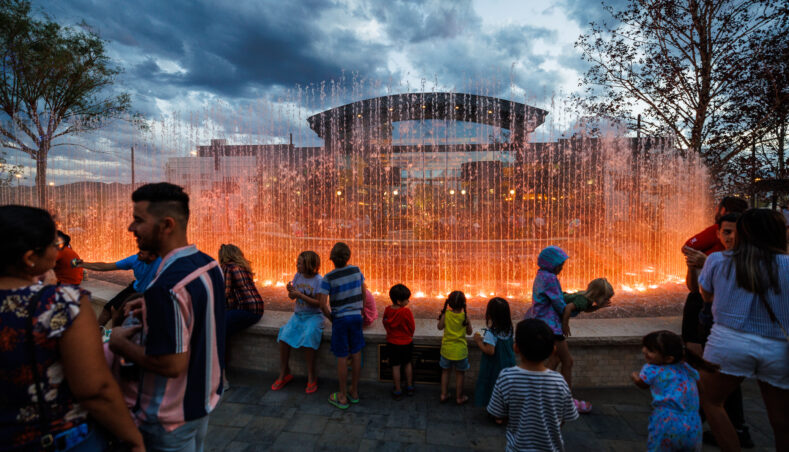Retail Entertainment’s Next Big Moves: 3 Trends to Watch
Posted in Insights -

The evolution of retail is unfolding rapidly, and it’s no longer just about what’s for sale—it’s about how the experience makes people feel. For commercial property owners and developers, staying ahead of these shifts isn’t just good strategy—it’s essential for maintaining relevance, foot traffic, and long-term value. Here are three retail trends that are reshaping how physical space is used, programmed, and monetized.
1. Experiential Retail and Immersive Spaces
Retail is morphing into entertainment. From AR-powered pop-ups to theatrical flagship stores, the goal is to turn passive shoppers into active participants. These aren’t just places to browse; they’re destinations to remember. Properties that allow flexibility for installations, performances, art-driven activations, and entertaining features like show fountains are far better positioned to attract younger, experience-hungry demographics.
What it means for property owners and developers: Build adaptable, programmable zones. Think less static retail and more dynamic event and amenity space. Infrastructure that supports changing tech, lighting, and crowd flow is key.
2. Gamification and Retailtainment
Malls and storefronts are adopting the mechanics of mobile games—badges, achievements, storytelling—to keep people engaged and returning. Whether it’s an in-store treasure hunt or app-linked loyalty rewards, these strategies extend customer dwell time and deepen engagement.
What it means for property owners and developers: Connectivity and digital integration are must-haves. Wi-Fi, power access, and mobile-friendly infrastructure aren’t perks—they’re baseline expectations. Properties that allow seamless blending of digital and physical experiences will attract the most forward-thinking tenants.
3. Virtual Worlds and the Metaverse
While it may still feel abstract, the virtual economy is already influencing physical development. Brands are hosting events in digital worlds and launching NFT-linked physical products. The line between digital identity and real-world presence continues to blur.
What it means for property owners and developers: Physical spaces increasingly serve as portals to virtual experiences. Think of how an in-store event might also be livestreamed into a metaverse activation—or how real-world designs might inform their digital twins.
Final Thought:
Developers and owners have a critical role in enabling the future of retail—not by dictating the format, but by creating flexible, engaging environments that adapt to rapidly shifting consumer behaviors. Whether through layout, infrastructure, or placemaking elements, properties must now do more than accommodate commerce—they must inspire it.
Featured Articles
- Bringing Out the Best: Leadership That Elevates
- From Spas to Speakeasies: Amenities Defining Today’s Private Estates
- Getting to Know Devin Schumacher, Director of Field Operations
- Building with Purpose: 5 Best Practices for Construction Efficiency
- Together We Innovate: Sparking Creativity in Your Team